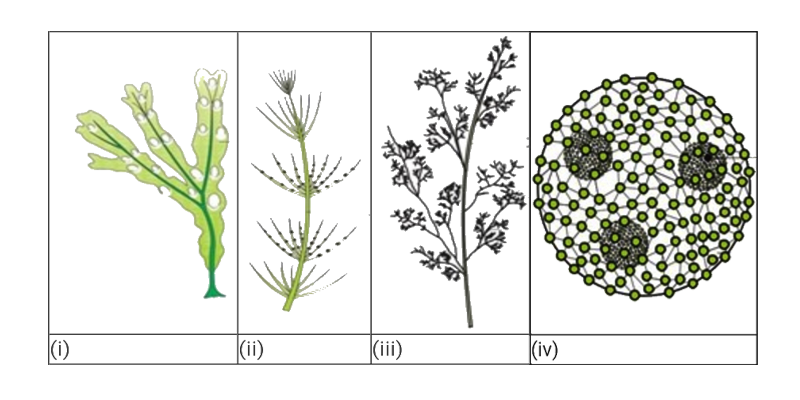A multicellular, filamentous alga exhibits a type of sexual life cycle in which the meiotic division occurs after the formation of zygote. The adult filament of this alga has
haploid vegetative cells and diploid gametangia
diploid vegetative cells and diploid gametangia
diploid vegetative cells and haploid gametangia
haploid vegetative cells and haploid gametangia
The correct Answer is:d
To solve the question regarding the multicellular, filamentous alga with a specific sexual life cycle, we need to analyze the information provided step by step.
1. Understanding the Life Cycle: The question states that the alga exhibits a sexual life cycle where meiotic division occurs after the formation of the zygote. This indicates that the alga undergoes zygotic meiosis.
2. Formation of Zygote: The zygote is formed by the fusion of male and female gametes. Since gametes are haploid, the zygote is diploid.
3. Meiotic Division: After the zygote is formed, it undergoes meiosis. Meiosis is a reduction division that produces haploid spores from the diploid zygote.
4. Spores and Adult Filament: The haploid spores produced from meiosis will then undergo mitotic divisions to develop into the multicellular filamentous structure of the alga. Therefore, the adult filament is composed of haploid cells.
5. Gametangia Formation: Gametangia are the organs that produce gametes. Since the adult filament is haploid, the gametangia that produce the male and female gametes will also be haploid.
6. Conclusion: The adult filament of this alga consists of haploid vegetative cells and haploid gametangia. The only diploid stage in this life cycle is the zygote.
Final Answer:
The adult filament of this alga has haploid vegetative cells and haploid gametangia.
The adult filament of this alga has haploid vegetative cells and haploid gametangia.
Topper's Solved these Questions
- NCERT Exemplar Questions +2 (REPRODUCTION HEALTH)BOOK - TRUEMEN BIOLOGY ENGLISHCHAPTER - NCERT Exemplar Questions +2 (REPRODUCTION HEALTH)EXERCISE - MCQs
13 Videos
- NCERT Exemplar Questions +2 (SEXUAL REPRODUCTION IN FLOWERING PLANTS )BOOK - TRUEMEN BIOLOGY ENGLISHCHAPTER - NCERT Exemplar Questions +2 (SEXUAL REPRODUCTION IN FLOWERING PLANTS )EXERCISE - MCQs
20 Videos
Similar Questions
Which type of life cycle occurs in Mucor
View SolutionWhich of these algae exhibit the haplo-diplontic life cycle?
View SolutionWhich of these algae have a haplo - diplontic life cycle ?

View SolutionIn which group of algae, the sexual reproduction does not show considerable variation in the type and formation of sex cells and is always advanced type in
View SolutionOne can easily differentiate between a protonera of moss and a multicellular, filamentous green alga as the former does not contain chloroplast in the rhizoids and bears buds which give rise to erect, leafy gametophores.
View SolutionWhich of the following statements regarding fertilization is/are correct ?
(i) The acrosome is filled with hydrolytic enzymes which help in dissolving the membrane of the ovum at the time of fertilization.
(ii) Vitelline membrane is the first membrane to be faced by sperms while trying to fuse with the ovum .
(iii) There must be synchronicity in the release of ovum and entry of sperm for the formation of zygote .
(iv) The meiotic division of the secondary oocyte is concluded with the entry of male gamete.
View SolutionWhich green algae shows only oogamous type sexual reproduction ?
View SolutionStudy the five statement (A-D) given below and select the correct statements :-
(A) The cyanobacteria are unicellualr, colonial or filamentous algae.
(B) Euglenoids are photosynthetic in the presence of sunlight when deprived of sunlight they behave like heterotrophs
(C) In phycomycetes mycelium is aseptate and coenocytic
(D) Bryophytes are plants which can live in soil but are dependent on water for sexual reproduction.
View SolutionName the type of cell division that takes place in the zygote on an organism exhibiting haplontic life cycle
View SolutionIn organisms that exhibit the (i) life cycle, the adult is haploid and it forms haploid gametes through (ii). The information in which alternative completes the given statements?
View Solution
